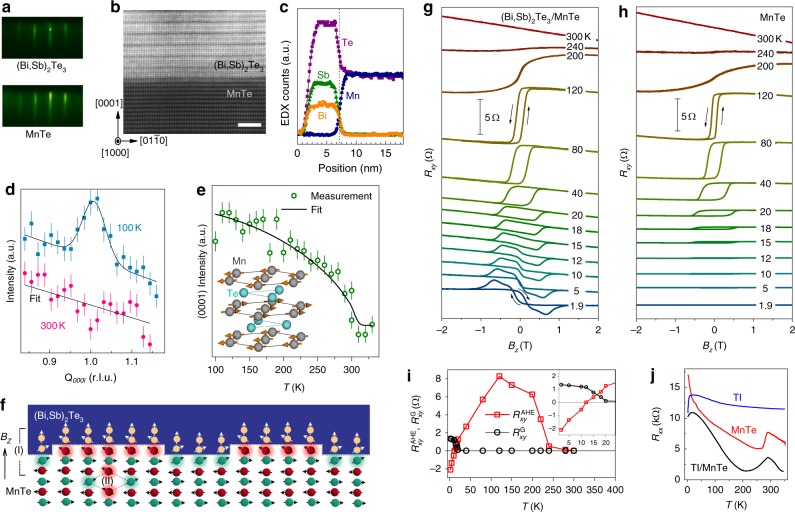Fig. 1.
Emergent geometric Hall effect in a TI and antiferromagnet bilayer. a Reflection high-energy electron diffraction patterns of TI (Bi,Sb)2Te3 and antiferromagnet MnTe. b A high-resolution transmission electron microscopy image of the bilayer cross-section. The scale bar represents 2 nm. c An atomic-resolution energy-dispersive X-ray spectroscopy (EDX) line-scan across the bilayer interface, demonstrating the sharpness of the elemental profiles at this interface. d The neutron diffraction measurement of the MnTe (0001) peak at 100 and 300 K. e the fitted temperature-dependent peak height suggest a TN of ~300 K, consistent with the one shown in (d). f Schematics illustrating the spins in the TI bottom surface, the interfacial FM layer, and the AFM spins in the bilayer under a perpendicular magnetic field. The polarized spins in the TI bottom surface is induced by the TI-AFM proximity (Region I), while some small magnetizations in the AFM layer may come from the defects in the bulk (Region II). g Field-dependent Hall resistance loops of the bilayer at different temperatures, which show a clear evolution from the AHE at high temperature to the GHE at low temperature. However, in a single MnTe layer, this GHE does not exist at the corresponding temperature range as shown in (h), demonstrating the role played by the top TI layer. i The magnitude of the AHE and the GHE at different temperatures extracted from (g). j The temperature-dependent longitudinal resistance of a pure TI, a MnTe layer, and the combined heterostructure. Error bars represent one standard deviation

